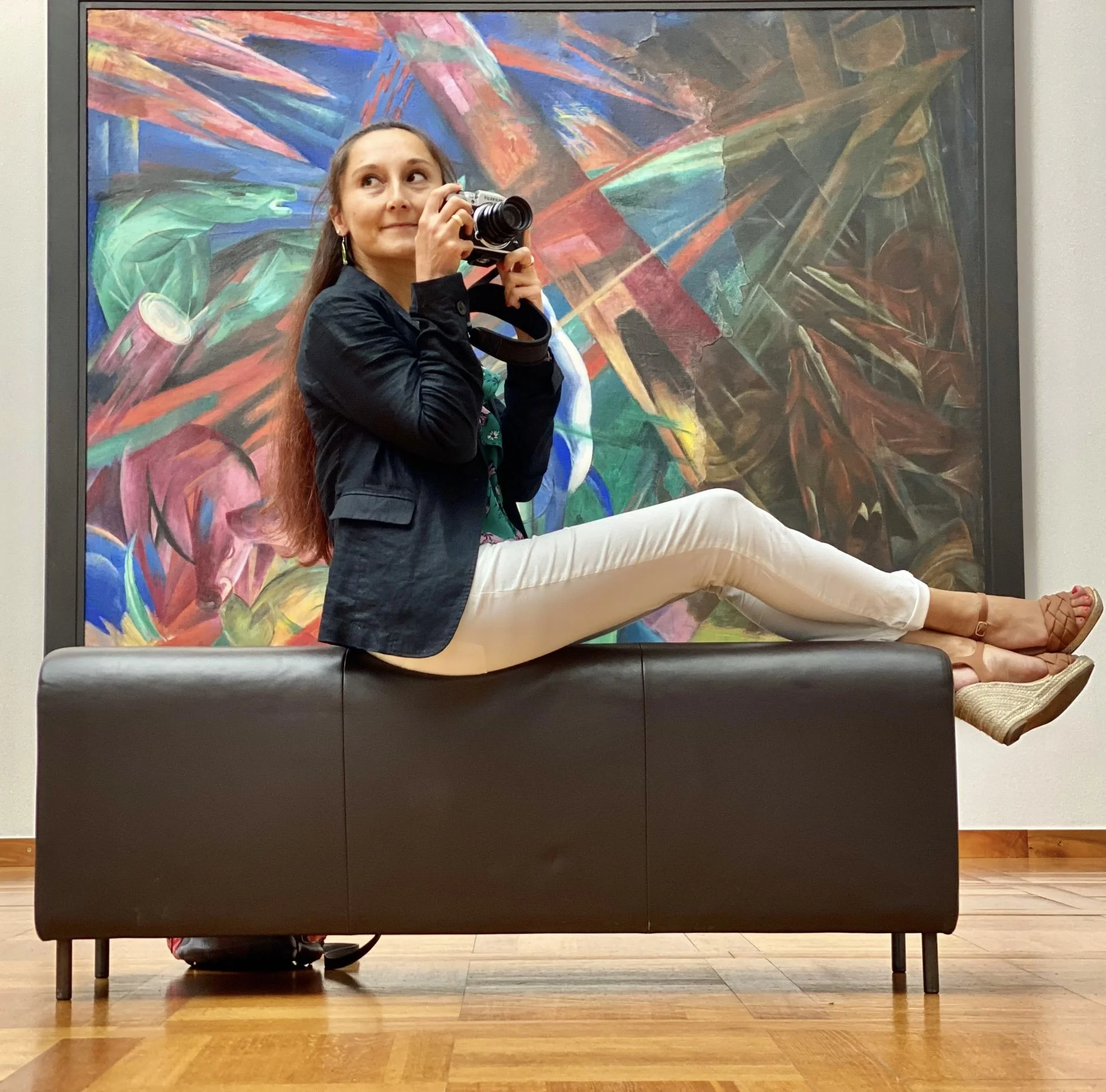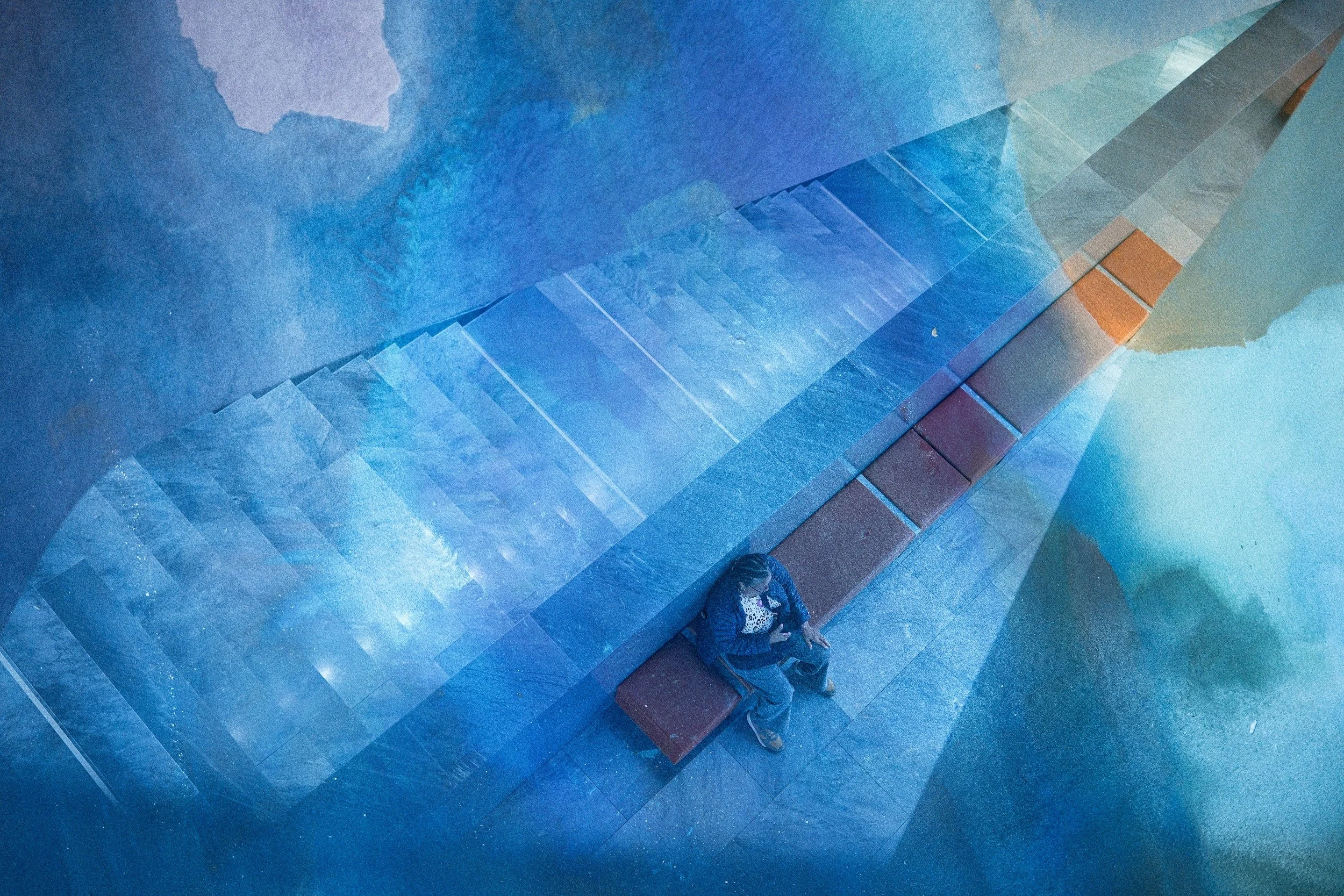5. Lens and paintbrush: a night at the museum.
Buongiorno a tutti e buona Domenica :) (happy Sunday!). How was your week? Did you find something or someone that inspired you to create photos?
From the title of this blog you can already guess where I have been…
Yes, at a museum! (Kunstmuseum in Basel)
I know, many of you are probably thinking: “How on earth can a museum be inspiring for photography? Should I take photos of paintings and sculptures? Boooooring!”.
This is the thing: if you look at museums from another perspective, they are probably the biggest source of creative ideas and inspiration you can think of.
How? Why?
Well, this is what I observe, every time I enter a museum:
THE ARCHITECTURE: museums are usually a piece of art themselves. Their lines, staircases, lighting, hidden corners allow obtaining original framings and compositions. From my point of view, museums should be the dream of every street photographer: leading lines, frames into frames, layers and reflections are really EVERYWHERE, ready to be used for our creations.
THE ART: paintings can be considered as “the old photography”, when cameras did not exist. Have you ever realized it? Painting and photography share similar artistic principles for composition and aesthetic. The aim of both forms of art is to create a balanced and harmonic scene, with a strategic use of positive and negative space, and the placement of the key subject or point of interest in a specific position in the frame, in order to draw the viewer’s attention to the focal point.
…and shall we talk about color theory, and use of light and shadows? Yes, you guessed it right: artists in both disciplines use them to create specific moods, atmosphere and induce emotional response in the viewer.
So, do you see why looking at paintings is like having a private class in photography techniques? I always learn so much at museums, and I find creative ideas for my future photography in paintings from the past.
1. Claude Monet: Woman With a Parasol (1875). In this painting you can see the use of the “rule of thirds”.
2. Vincent Van Gogh: The Starry Night (1889). In this painting you can see the expert use of color theory and movement of the paintbrush to create a sense of inner turbulence, melancholy and contrasts.
3. Leonardo da Vinci: The Last Supper (1494-1498). In this painting you can see the use of the “Frame into frame” and “Leading lines” techniques.
4. Leonardo da Vinci: Mona Lisa (1503-1517). In this painting you can see the use of the “Sfumato” (= blurry), a technique of blurring or softening sharp outlines to create a smoky or hazy effect.
5. Rembrandt van Rijn: Man in Oriental Costume (The Noble Slav) (1632). In this painting you can see the use of “Chiaroscuro” (=light and dark), a style using strong contrasts between light and dark to create dramatic effects.
6. Michelangelo Merisi De Caravaggio: Saint Jerome Writing (1607). In this painting you can see the use of “Tenebrism”, a style that uses extreme dark and light to create a sense of dramatic intensity.
THE VISITORS: now that we have the place, the framing and the atmosphere, let’s find the subject. I walk in museums in the same way I walk in the streets, looking for an interesting subject, a reflection, a silhouette, with the only difference that in the street sometimes I miss the shot because a car passes just close to my subject and ruins the scene, another person enters the frame, or the environment is not that appealing. In a museum everything is there, just perfect, with the plus that the visitors do not move too fast and often blend with the art in a really fascinating way. Yes, it is a Street Photography 2.0 ! :)
MY TIPS FOR YOUR PHOTOEXPERIENCE AT A MUSEUM:
Bring minimal gear: usually you will not be able to carry a big bag at exhibitions, and you’ll be asked to leave everything in a locker room. Bring only one camera and one lens, that can possibly perform well in low light (often at museums there are rooms with scarce illumination to protect the paintings). For my last afterwork at the museum I brought my Fujifilm X-T5 + XF 23 mm f/1.4 LM WR.
Choose a museum exhibiting art that resonates with your creativity and taste: in this way, you will fully enjoy your time at the museum and will end up “stealing” ideas for your photography.
Start your visit during quiet times, if possible: visiting museum on weekdays, early mornings or after work allows avoiding crowds, have more time to compose your shots and find more opportunities for subject isolation.
Explore different areas: look for inspiration in less crowded exhibits or back rooms, which can offer unique perspectives for your photos.
Be patient: museums are the best place where to use the “fishing technique”. Find the right spot, with the lighting and framing you want, and wait for interesting subject to pass. In the end, why to hurry? When you are at a museum, you have all the time in the world (ok, until the closing hour ;) ).
Did I convince you to look at museums with different eyes? I hope so.
I wish you a great rest of the weekend and a creative week!
Chat soon again!
Very










